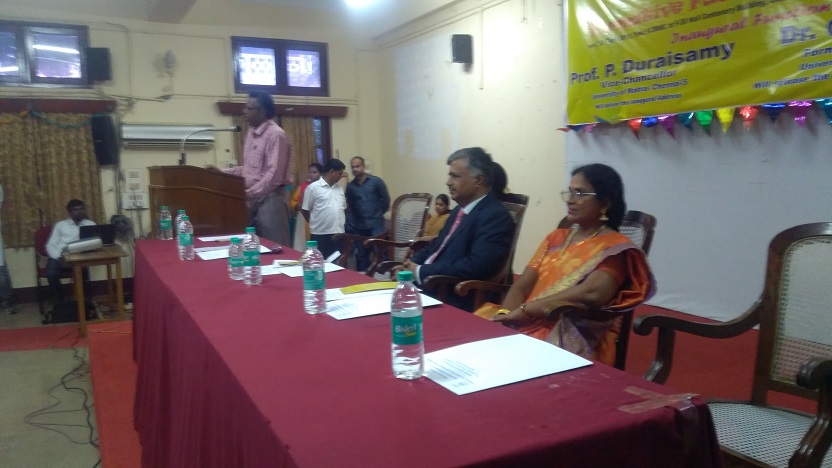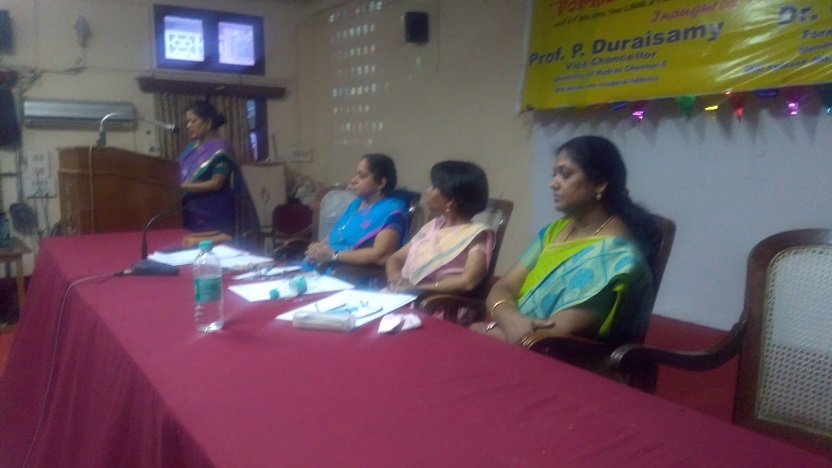Why India was invaded many times since ancient times, but India did not invade? (2)
The reason, why India was invaded: If the reason is analyzed, from the Persian, Greek, Arab and European writings, it is given as follows on many grounds –
- India was rich with wealth (this is the main reason cited by most of the writers and authors of history books),
- Honey and milk were flowing (literary version of describing the wealth of India),
- Pearls and valuables were found on the roads.
- India was opulent with gold and diamonds
- Even ants were of dog size carrying golden powder (thus, Indians paid tribute to the Persians).
- Gorgeous clothes were grown on trees (Herodotus[1].)
- Many interesting, strange and valuable goods were available that were not available anywhere on the globe.
- It was paradise heaven and dreamland on the earth.
- It was the origin of the human race and the land of gods (18th to 20th centuries narratives[2]).
- If “India” was won, that was equal to conquering the world.
These are only for illustrative purposes and not exhaustive, as the Persian, Greek, Arab and European literature and writings give only one-sided narratives.
Critical analysis of the above reasons: A simple analysis of the above reasons in any context of time and place proves that such propositions have been a violation of human values, principles and code of conduct. Just because, “India was rich with health,” could anyone invade and loot? Were the Persian and Greek civilizations were with all advances science and technology, they must have been much rich than other civilizations. How then, they decided to invade “India”? They were also boasted themselves of the highest form education, how they could have been so unkind, heartless and mean to do so? This clearly points to some abnormal, aberrant and unsocial mindset, psyche and attitude of them. Like this, every point can be discussed and elaborated, but, no ethical standard, nor mal principle or code of good conduct admits, permits or accepts such violations. It is irony that when the western scholarship advocates such lofty principles, human rights, woman rights, children rights, animal rights, and so on, they do not bother about what their forefathers committed on /Indians. Yet, such violations are not discussed, but, made Indians to accept that they were weak, divided and so on. This ideology or compromise contradicts, because, one cannot or have right to dishonour or molest a woman, just because, she is weak, alone or beautiful or physically challenged. If one dies so, his cruel mentality has to be analyzed and exposed, than the weakness of the victim. This is understood, if the psychology of “invader” and “invaded” are critically analyzed.
The psychology of “invader” and “invaded”: If the issue is analyzed, the psychology of “invader” and “invaded” can easily be understood, in any angle, perspective and purview. Perhaps, none has pointed out the morality, ethics and code of conduct in the context. That “India-1947,” still survives, proves that something make her sustain, condition and get along with the times. It has been definitely, the struggle between ahimsa (non-violence) and himsa (violence) since earlier, historical or protohistorical times. Whether 3500 BCE-India, 1500 BCE-India, 550 BCE-India or 326 BCE-India, Indians never knew that such things as “invasion of the Persians and the Greeks” ever happened. No common man knew or anywhere recorded such event, till, the British came and try to discover “Alexander” in the Greek literature comparing many similar words. Though, scholars point out the impact of them on Indians, Indians never felt or cognized such influence. When the 1947-India has still been living with 5000-years old tradition, heritage, culture and civilization, the other civilizations disappeared and the existing ones have been in the zones of “violence”. Expansionism, aggression, violation of treaties, no respect for human values, code of conduct, ethics, etc., the “invaders” even today have been the advocates of violence, interested in battles and war; supply of arms and ammunition to continue the war, explode bombs and kill innocent people; exporting such extreme violence now mentioned as “terrorism” in different forms to developing, under-developed and weaker nations. Bertrand Russell[3] analyzed different types of war – war of colonization, war of principle, war of self-defence, war of prestige – but, now, more can be added. And they continued even today after hundred of years.
Whiteman’s burden: The expression may have been popularized through Rudyard Kipling’s book, “The White Man’s Burden” published in 1899. It is implied as ‘the supposed responsibility of European people to govern and care for their colonial subjects’. What was that “burden,” the white man was carrying or responsible for? Who had / has loaded the burden? Ws it loaded by Whiteman himself or by non-Whiteman, black man or brown man? By colonizing, extracting taxes, looting economically, enslaving, breaking families, and all other inter-related socio-economic violations and crimes, the Whiteman devastated many societies on the globe, including India. Thus, the Whiteman became a burden for all other people on the earth and India also. That is why perhaps, the Whiteman was / is still called mentioned and recorded as vellakkaran, mlecha, angliyan, parangi and so on[4], evidently with contempt. Unless, the Whiteman had made Indian to suffer by many methods, they would not have considered them, so, consciously. Because, these words and expressions had been that of common people of India coming from villages and rural areas. Therefore, the colonial forces, by their various methods of rule, evidently tyrant enough to register their image in the minds of the common people.
Race, racism and racialism in USA and EC: Even in 21st century, in spite of all progressive, forward looking and scientific temper thinking, race, racism and racialism work in one way or the other. In USA and in certain places of Europe, it has been explicit, in other places, it is implicit working consciously. In hospital admission, the race is asked and it has to be mentioned in the application[5]. It s noted that a pregnant woman of USA is asked whether “she was Northern European, Southern European, Ashkenazi Jewish, Hispanic, African American.” It is also mentioned that, “Before drawing blood, a nurse asked the pregnant woman to state her race.” Race, and its by-product racism, are major factors in the U.S. health system and help define one of America’s health dilemmas[6]. Michael Byrd and Clayton Linda point out, “Racism in medicine and health care has paralleled racism in society…. From the American health system’s very beginnings, race has been, and remains, a pervasive yet enigmatic issue. …Race is important in American health and health care, whether viewed from the perspective of racism adversely affecting clinical decision-making regarding patients”. In London, such issues have gone to courts also. In Germany, Australia and other places one has to live and realize. In UAE, it works differently including religious belief-system. However, Indian sociologists, psychologists, anthropologists, historians and others rarely discuss these issues. However, the concepts of British “born to rule,” “white man’s burden” etc., are taught, questions asked in the exams and marks given in India. This is also part of invader-invaded, ruler-ruled, oppressor-oppressed, suppressor-suppressed and so on in research studies.
India never invaded, why?: There have been Itihasa and Puranic references to the effect that the entire world was “Indian.”[7] Slowly, Indian influence of culture, tradition, heritage and other factors got reduced with changing times. Thus, the climatic, geological and other related factors, made people groups living in different areas started developing their culture with material and non-material modifications. After Mahabharat War dated to 3102 BCE[8], the participant nations spread to various places and they could not reach their destinations. Thus, they settled down wherever possible, thus, they because part and parcel of the culture of the respective places. Thus, during the last 5000 years, many changes had taken place. The geologists, archaeologists, geo-physicists and related experts talk in terms of evolution, epochs, ages, Paleolithic, Mesolithic, Neolithic, megalithic; chalcolithic, protohistoric and other concepts. In any case, India has history, studied by others.
Will Durant summarized the position of “India”:
“India was the motherland of our race, and Sanskrit the mother of Europe’s languages, she was the mother of our philosophy; mother through the Arabs, of much of our mathematics; mother, through the Buddha, of the ideals embodied in Christianity; mother, through the village community, of self-government and democracy. Mother India is in many tvays the mother of us all”
Sir Charles Elliot has commented about such “invaded” psyche imposed on India:
“Scant justice is done to India’s position in die world by those European histories which recount the exploits of her invader and leave the impression that her own people were a feeble dreamy folk, sundered from the rest of mankind by their seas and mountain frontiers. Such a picture takes no account of the intellectual conquests of the Hindus. Even their political conquests were not contemptible, and are remarkable for the distance, if not the extent, of the territories occupied …. But such military or commercial invasions are insignificant compared with the spread of Indian thought.”
Thus, India was dominating culturally, traditionally with inherited factors and it could have been possible, only when Indians were there in all places of the world. Then, as noted, the geographical area of “India” got reduced and her the Indian influence is felt again through such factors only. Now, they might be dubbed as “nationalist,” “communal” and so on. But, the opinion of others is / has been suppressed and oppressed, yet, they talk about freedom of opinion, speech, writing etc. if such values are to be applicable, they have to be applied universally to all.
© K. V. Ramakrishna Rao
10-09-2022
[1] Herodotus, the “father of history” gives such fantastic descriptions and he even mentioned that Indians were having two heads, three eyes, eye in the stomach and so on.
[2] Leon Poliokov, Aryan Myth,
[3] Russell, Bertrand. “The ethics of war.” InThe International Journal of Ethics 25.2, 1915, pp. 127-142.
[4] வெள்ளக்காரன், …மிலேச்சன், ஆங்கிலேயன், பரங்கி……such other expressions were used in Tamil clearly denote them describing their nature.
[5] Morning, Ann. The nature of race: How scientists think and teach about human difference. University of California Press, USA, 2011, Introduction, p.2.
[6] Byrd, W. Michael, and Linda A. Clayton. “Race, medicine, and health care in the United States: a historical survey.” Journal of the National Medical Association 93.3 Suppl (2001): pp.11S-34S
[7] Chaman Lal, India Mother of all of us, Published by the author, New Delhi, 1968.
[8] Historians and scholars give different dates c.2450 BCE, 1400 BCE etc, however, this date has been expected now based on astronomical and other evidences.
Filed under: ahimsa, America, anti-india, anti-indian, antique, archaeology, Aryan, astronomy, bharat, Bharat-centric, black, blade, blood, body, book, c-14, category, centre, chalcolithic, Colonialist discourse, colony, columnist, commerce, Communist Historian, compassion, conduct, constitution, controversy, coolie, coolitude, copper, culture, depressed class, Dravida, dravidar, Dravidian, evidence, Gandhara, Heliodorus pillar, heritage, himsa, Hindu, Hinduism, historian, historian politician, historicity, historiography, historiosophy, history, history usage, india, india exragangem, india intragangem, india that is bharat, indian ocean, indica, interpretation, invade, invaded, invader, invasion, invention, left, legend, marxism, Marxist historian, Marxist-Leninist, myth, myth promoted, mythologization | Tagged: aryan, Dravidian, historian, historical, historicity, historiography, history, history writing, India, indian history, indian ocean, indica, invade, invaded, invader, invading, invasion | Leave a comment »


























